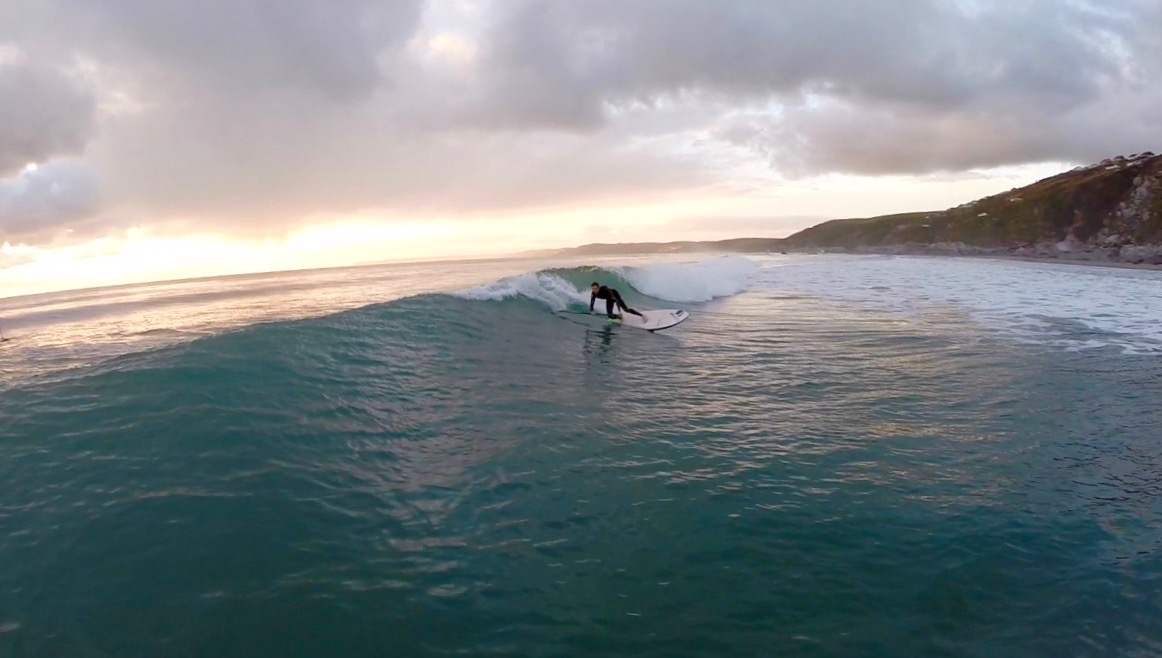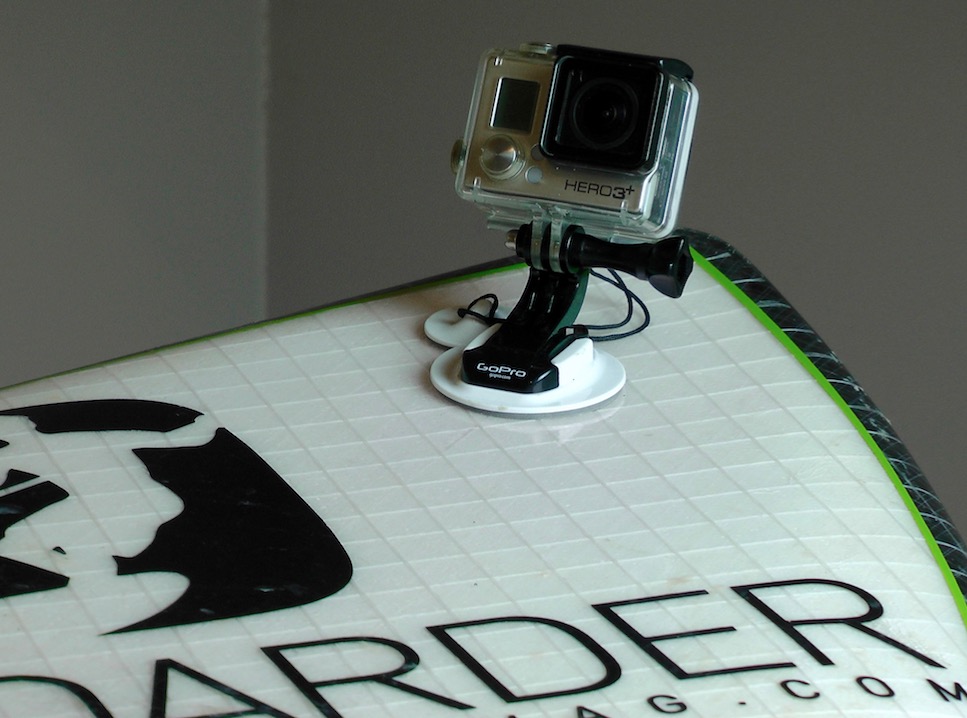
Water on the lens
Water runs off everything right? Wrong!! When water hits your camera droplets can become stuck to your lens, ruining that great shot with a blurred image. You can be sure that the water droplet will be positioned perfectly over what you’re trying to capture on camera. VERY ANNOYING! There are a few things you can do to prevent water on your lens. 1/ Spit/lick the outside of the lens before it gets wet. This helps prevent the water droplets forming and sticking to the glass by holding a very thin layer of water on lop of the lens. 2/ Give your camera a quick dunk underwater now and then to remove any droplets .
Water sitting on your lens will be sure to ruin your footage. Although less of an issue on cases with a flat lens cover do what you can to prevent it, rather than finding out the effects when you get home!
Keep it safe
OK it sounds like an obvious one, but it’s always better to be super safe than sorry! There’s nothing worse than watching your camera slowly sinking below the water attached to what you thought was a camera float, or climbing back on your board after a wave to discover all thats left on the nose of your board is the mount! Yes action cameras are designed to fix onto you or your kit with a mount, but don’t rely on them 100%. Cameras usually don’t float by themselves so you can always add a float to the case just incase it becomes detached from the mount. You can either buy a specialist float or make your own from a piece of foam, and then spray it a bright colour so it’s easier to spot in the water. And if you use a camera float it’s worth checking that the float will support the camera AND mounting hardware. You don’t want to be watching them both go down beneath you! The simplest and ultimate way to ensure the security of your camera is with a tether. Attaching your camera to the mount and ideally also the mount to you/your kit with a piece of fine rope will ensure that you’re never parted from your camera. It’s also worth double checking that the case is securely shut before you leave dry land! Knowing that your camera is safe will mean you won’t be worrying about it and will be able to enjoy your SUP session more. Unfortunately many of us learn this the hard way!
Position it right
When you put the camera in its case make sure that it’s firmly in place and pointing the way you want it to on the mount. Think about what exactly it is you want to capture. The most popular camera mount on a SUP is on or near the nose of your board. This lets you capture your mates when facing forward and you when facing backwards. But you can also get some great shots by positioning your camera on your paddle, head, back, or chest. Just give them all a try to see what works best for you. There are many specialist mounts available to buy, or you can make your own. Get playing!

Keep things close
Most action cameras use a very wide angle lens so you’ll need to keep the subject close to get the best results. Too far away and they will be lost in the background. Once again, it will take a few attempts to figure out what works best. And a few failed sessions to learn what doesn’t!
Increase your chance of getting it back!
If the worst happens and your camera becomes detached from its mount then don’t despair, there’s always a chance it will turn up. Put your contact details on it and then if it does go walkabout, you’ll increase your chances of getting it back. Just keep your fingers crossed! Also if it’s in a fluro casing then it will be easier to spot if washed up on the beach or floating in the water.
Be kind to your camera
Action cameras are designed to be tough but they could still do with some TLC. Although robust it’s still possible to crack the case or scratch the lens casing. So simply storing the camera in a soft bag or investing in a lens cover, will help keep the casing in great shape for longer. Look after the springs in the buttons by keeping them clean and use a tiny bit of oil occasionally to keep them in tip top condition. Also if you’ve been using your camera in salt water then it’s good practice to always rinse it with fresh water after each use and allow it to dry before you open it. You can then be sure there’s no chance of water getting inside the camera or damaging the camera/case with salt water whilst being stored.
So even when you’re in a rush to get on the water, take your time to get your camera sorted, otherwise it’s not worth taking it! Coming back with no decent footage is annoying to say the least! And worse still, no camera is never a good start to the year! And look after your camera on and off the water, so it’s ready for the next session. Good luck!
Let us know if you’ve got an action camera and have got any good tips to share.
Good advice, but a couple of things I do with my GoPro wind up with pretty good results: 1. Use rainex on the lens. This can be purchased at an auto shop and is great for shedding water droplets. I apply it before each use. It does a better job than licking and you look less weird. 2. Put silicone grease on all o rings. Small droplets can seep in and fog the lens. Get this from a dive shop. 3. Minimise use of the buttons in the surf. Each press seams to let in just enough to fog the… Read more »
I honestly don’t like when people have camera’s on their boards… One – legit question as I don’t know the answer – how many get knocked off and become marine pollution? Two – surfing is a spiritual connection between you and the wave. Be there, present in the moment and enjoy. Stop worrying about how you look or getting cred for your ‘sweet moves’…. I personally would like to see people enjoying the moment for the moment – not for what they can get out of it. I was in Tofino just last weekend and there was a total grom… Read more »
I like to think that using my GoPro helps share the stoke. It gives me a reminder of good times past and is great for capturing friends & family as well. Mount it well, switch it on and leave it – no fiddling required. And remember that it doesn’t always having to be pointing at you, some of my best shots of friends have been from the camera pointing forwards on my board or using the chest harness. You don’t have to be an expert to film what you’re doing and sometimes capturing a record of your journey & progress… Read more »
Great article with lots of informative tips! Taking our Go Pro out is an awesome way to relive the adventures we take. Lately we have been using the Floating Tripod to get a different angle than most mounts can provide. Check it out at floatingtripod.com